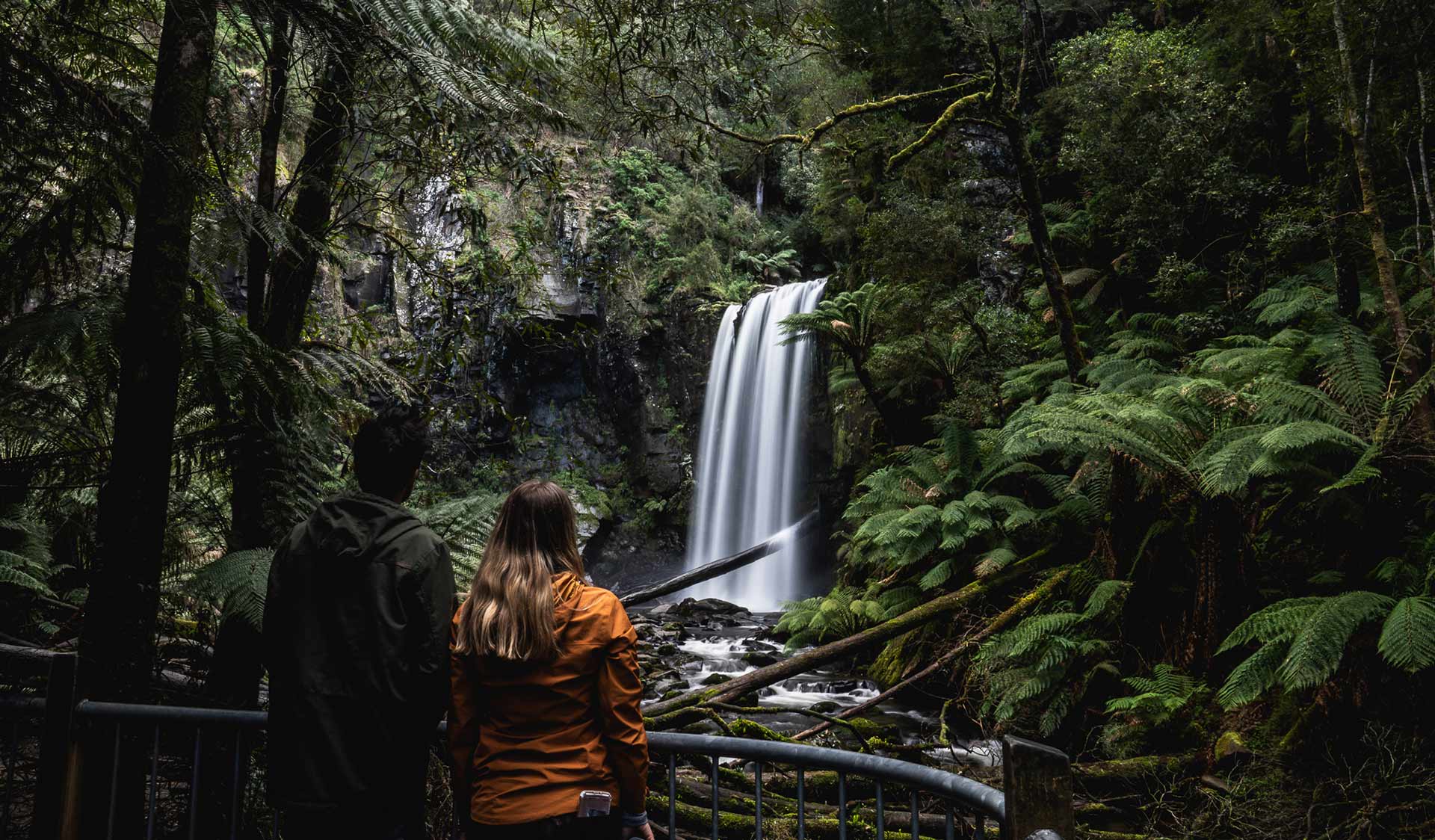Dandenong Ranges garden guide – 7 unique gardens close to Melbourne
You’ve probably heard of the Dandenong Ranges Botanic Garden, but did you know there are six other unique gardens and parks to explore nearby?
The Dandenong Ranges, on Wurundjeri Country, are only an hour’s drive from Melbourne, but you’ll feel like you’re in another world entirely.
With a cool climate, high rainfall and rich volcanic soils, these low-level mountains are a plant (and plant-lover’s) paradise. Indigenous ferns and eucalypts mix in with exotic fare from far-flung locales. It’s a place of super-charged growing and striking seasonal interest.
Here, seven unique gardens – Dandenong Ranges Botanic Garden, Chelsea Australian Garden at Olinda, Alfred Nicholas Memorial Garden, Pirianda Garden, George Tindale Memorial Garden, R.J. Hamer Arboretum and Mount Dandenong Arboretum – are located within a short drive of each other.
We’ve put together this guide to help you plan your visit to one or all of these seven gardens in the Dandenong Ranges.
While you are visiting, remember to stay on the formed pathways, not pick any flowers or plants, and take your rubbish home with you. Dogs and other pets are not permitted within the Dandenong Ranges Botanic Garden but are allowed on leash within the other gardens.
1. Dandenong Ranges Botanic Garden
Opening Hours: 10am-4:30pm (gates locked 5pm) daily, except Christmas and days of Extreme or Catastrophic Fire Danger.
The Dandenong Ranges Botanic Garden is Victoria’s premier cool-climate botanic garden.
A place of both high-end horticulture and boundary-pushing conservation. As well as the garden’s extensive plant displays – with over 15,000 rhododendrons, 12,000 azaleas, 3,000 camellias, 250,000 daffodils, banks of hydrangeas and a cherry blossom grove – a suite of plant conservation programs are also conducted here. The garden was opened in 1960 and, while they were known as the National Rhododendron Gardens until 2017, the aim has always been to exhibit a wide palette of plants.
That palette keeps getting wider, with a large-scale re-creation of the ‘Australian Garden’ that won best in show at the 2013 Chelsea Flower Show in London now a permanent display here – the Chelsea Australian Garden at Olinda (read more below).
The newest addition to the garden is the Australian Cloud Forest Collection which showcases and conserves endangered flora from Queensland’s Wet Tropics World Heritage Area.
Stroll around the 3.5km of paved walkway, including around the large ornamental lake, or join a tour on the garden’s open-air bus, which operates year-round. There are plenty of tables and grassy areas to enjoy a picnic – just remember to bring a bag to take your rubbish home with you.
These gardens offer new delights in every season. In spring, they are teeming with bulbs and blossoms, while in summer they bring refreshing respite, being about 5°C cooler than central Melbourne. In autumn, the leaves of the majestic deciduous trees and shrubs are ablaze in fiery colours, while winter reveals intricate textures, distant views and atmospheric mists.
Dogs and other pets are not permitted within the Dandenong Ranges Botanic Garden.
Ranger tip: Avoid crowds by visiting on a weekday, or early on a weekend.
Accessibility: The main 3.5km circuit path is a wide, sealed surface, but some sections are quite steep. Unassisted wheelchair access is not recommended. Most of the minor paths are unsealed and not recommended for wheelchairs.
Read more: Dandenong Ranges Botanic Garden visitor guide (PDF)
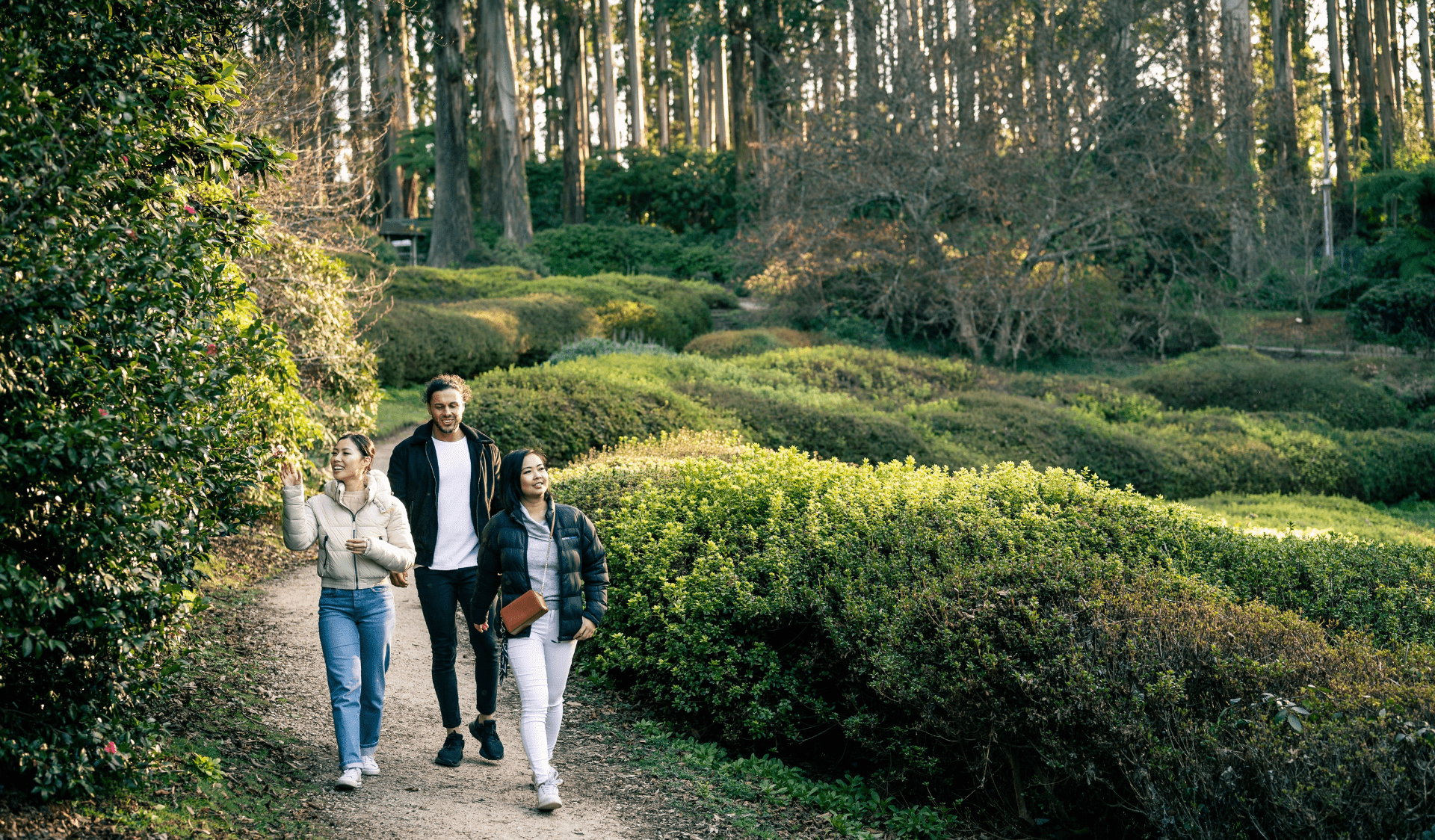
Dandenong Ranges Botanic Garden. Image: Visit Victoria.
2. Chelsea Australian Garden at Olinda
Opening Hours: 10am-4:30pm (gates locked 5pm) daily, except Christmas and days of Extreme or Catastrophic Fire Danger.
One of the latest additions to the Dandenong Ranges gardens is the Chelsea Australian Garden at Olinda, a large-scale re-creation of the ‘Australian Garden’ that won best in show at the 2013 Chelsea Flower Show in London.
It’s located within the Dandenong Ranges Botanic Garden and introduces additional rare and endangered plant species.
At around 20 times bigger than the original garden, this head-turning space, created by designer Phillip Johnson, is now a permanent fixture. A waterfall, billabong, 9-metre-high Waratah sculpture and boardwalk are just some of the elements arranged across multiple levels and containing several different microclimates. 15,000 plants across 400 different species grow here.
Sustainability and water-sensitive design are central to every aspect of this space that recreates vital habitat for birds, insects, reptiles and frogs. The waterfall is solar-powered, and the billabong is replenished with local storm water. The landscape highlights the seasonal beauty of nature, with different plants in flower all year round.
Dogs and other pets are not permitted within the Chelsea Australian Garden (part of the Dandenong Ranges Botanic Garden).
Fun fact: The garden was built atop the former Olinda Golf Course – two 10 litre buckets of golf balls were found during construction!
Accessibility: The Chelsea Australian Garden at Olinda has DDA-compliant pathways included in the new garden. Entry paths and surrounding pathways and areas within the original Dandenong Ranges Botanic Garden are not fully accessible, which should be taken into consideration when visiting.
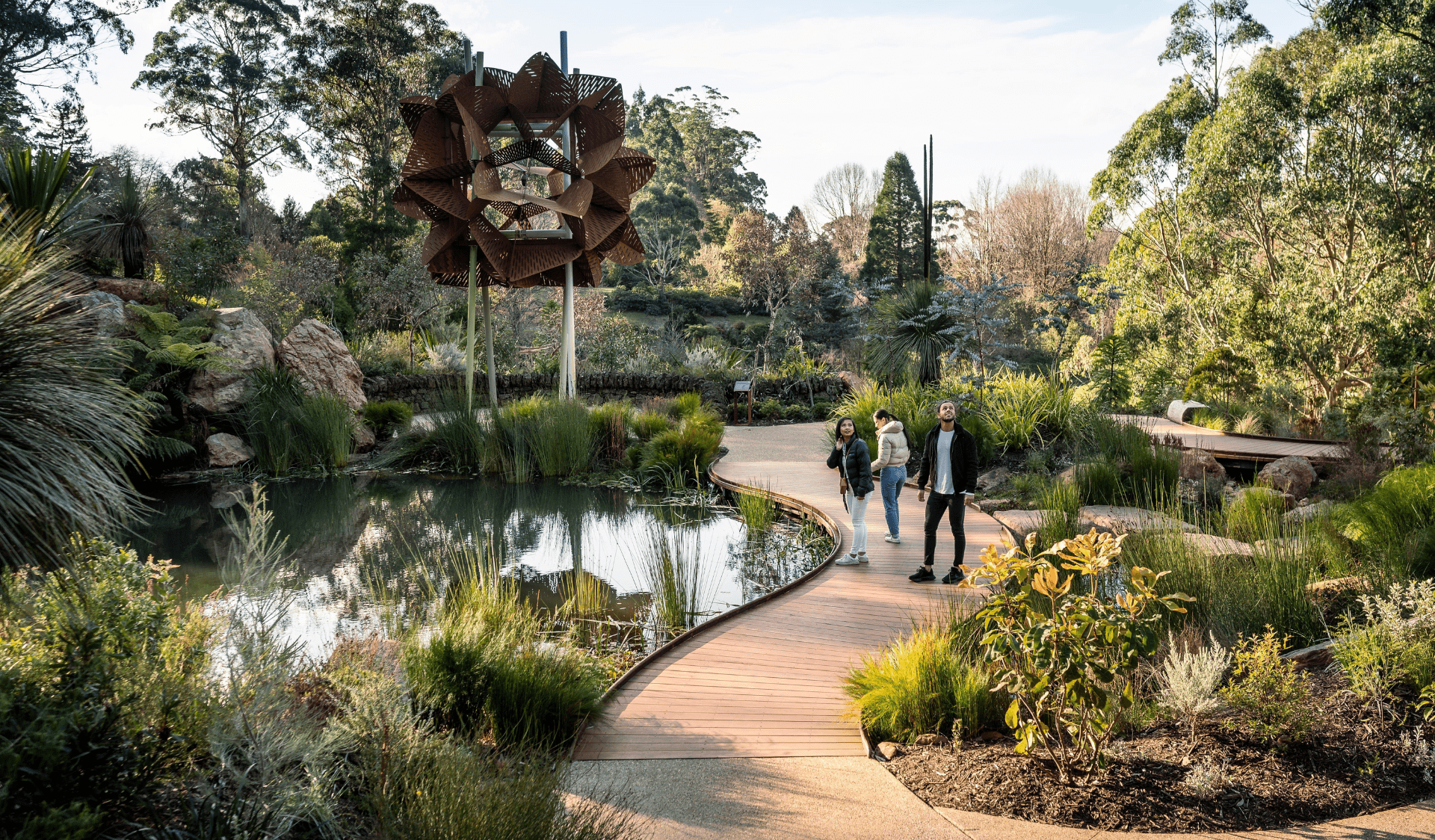
Chelsea Australian Garden. Image: Visit Victoria.
3. Alfred Nicholas Memorial Garden
Opening Hours: Daylight hours, daily, except days of Extreme or Catastrophic Fire Danger.
Established in the late 1920s and early 1930s by the pharmaceutical magnate Alfred Nicholas, the lavish Alfred Nicholas Memorial Garden contains theatrical water features, exotic trees, fine rock walls and extensive terraces.
Sloping paved paths lead you to a large ornamental lake that has a boathouse, bridges, islands and the air of a magical fantasy land.
In autumn, the water is carpeted in the buttery yellow leaves of the surrounding ginkgo trees, while a string of maples adds fiery red and orange hues. Also look out for the dramatic rock walls that form the lake’s backdrop.
Although Nicholas’ Art Moderne mansion is no longer part of the property, it is clearly visible, and you'll get a clear sense of how the house and garden were created to be one grand, seamlessly connected landscape.
Dogs are welcome in the garden but must be on a leash at all times.
Ranger tip: Visit on a winter morning for atmospheric mists.
Accessibility: Sealed pathways at the top of the garden are accessible by wheelchair with assistance. Other sections of the garden include unsealed steep pathways that are not recommended for use by wheelchairs.
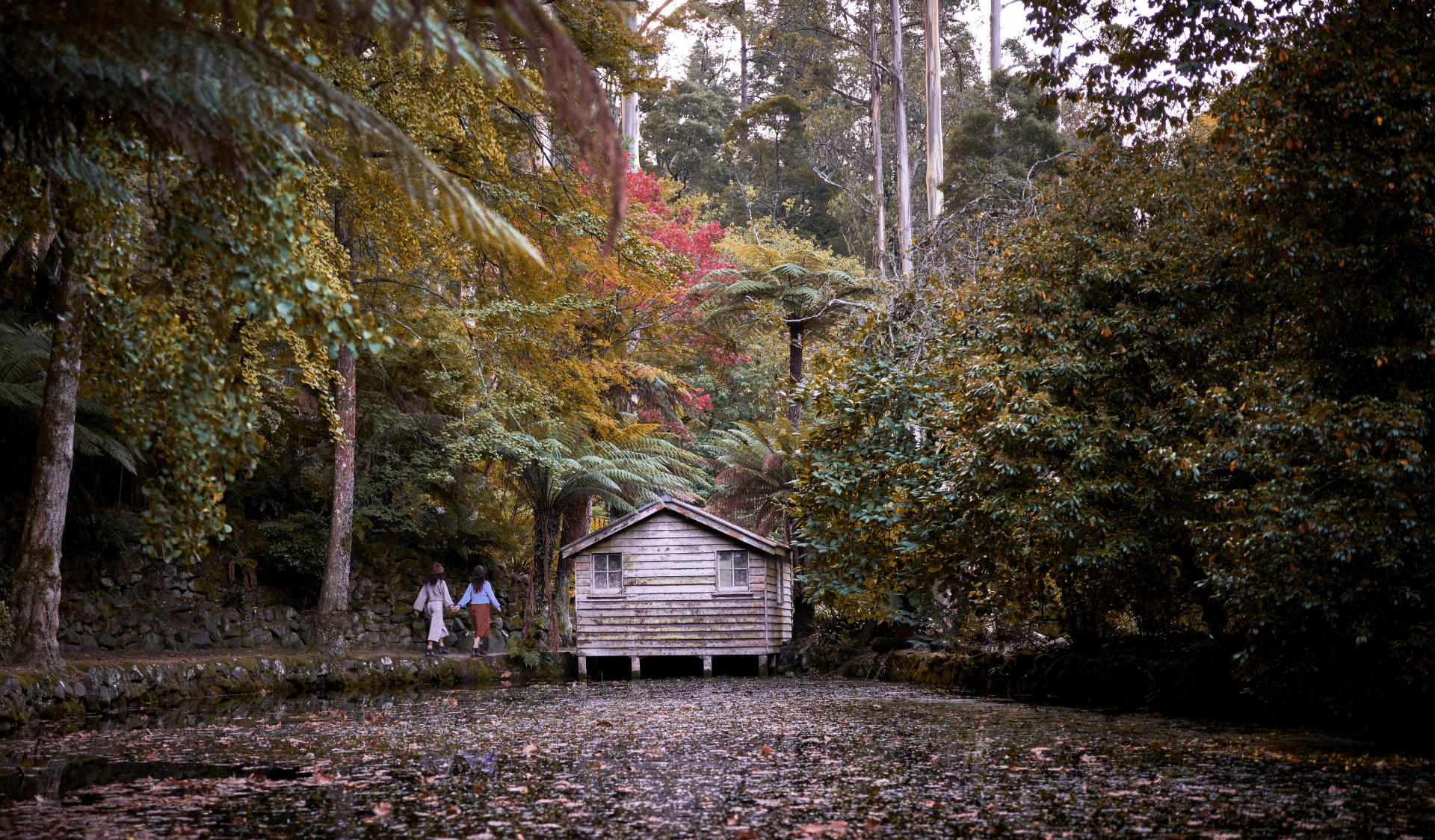
Alfred Nicholas Memorial Garden. Image: Visit Victoria.
4. Pirianda Garden
Opening Hours: Daylight hours, daily, except days of Extreme or Catastrophic Fire Danger.
The delightful 11-hectare Pirianda Garden is leafy and tranquil, a perfect place for lazing on lawns and strolling around many northern hemisphere trees and shrubs not commonly seen in Australia.
Largely the creation of Harvey and Gillian Ansell, this serene garden was their personal expression. They acquired many of its plants on annual overseas holidays.
It is set on a steep slope and, while some will opt to linger below the many trees in the upper reaches, you can also venture to the lower terraces where you will be rewarded with even more maples, birches, rhododendrons, viburnums, stewartias and magnolias. As you descend you will see finely crafted terrace walls built from local stone and, in the lower part of the garden, the Ansell’s modernist 1962 house.
The fern gully walk, also located at the bottom of the garden, provides a silent, shady haven in summer, while the garden’s three large Chinese Handkerchief trees come into their own in spring when the white tissue-like flowers, which are in fact bracts, flutter in the breeze.
Dogs are welcome in the garden but must be on a leash at all times.
Visitor Tip: Pirianda Garden is the best place to see striking autumn foliage without the crowds.
Accessibility: The steep sealed pathways at the top end of the garden are accessible by wheelchair with assistance. Other sections of the garden include unsealed steep pathways that are not recommended for use by wheelchairs.
5. George Tindale Memorial Garden
Opening Hours: Daylight hours, daily, except days of Extreme or Catastrophic Fire Danger.
Charming and exceptionally diverse, the George Tindale Memorial Garden was fashioned by a pair of knowledgeable plant enthusiasts who went to great lengths to amass rare and unusual specimens that would thrive in this cool temperate climate.
George Tindale, a research scientist with the Victorian Department of Agriculture, and Ruth Tindale, an avid plant collector and gardener, were members of numerous horticultural societies and, in the late 1950s, forged ties with a network of other plant collectors in a bid to source a wide range of hydrangeas, magnolias, rhododendrons, camellias, azaleas, fuchsias, bulbs and other suitable fare.
You can picnic on the lawns or take walks along the web of interweaving paved paths to soak up the colourful 20th-century ‘Gardenesque’ mood.
Thanks to the wide diversity of plants this garden is dynamic and different each season of the year. You’ll see new flowers on every visit, including bulbs in spring and autumn, hydrangeas in summer and hellebores in winter. There is also brilliant autumnal leaf colour.
Dogs are welcome in the garden but must be on a leash at all times.
Ranger Tip: Visit in the late afternoon when the sunlight is more subdued and the brilliant colour of the flowers and foliage is at its sharpest.
Accessibility: Sealed pathways at the top end of the garden are accessible by wheelchair with assistance. Other sections of the garden include unsealed steep pathways that are not recommended for use by wheelchairs.
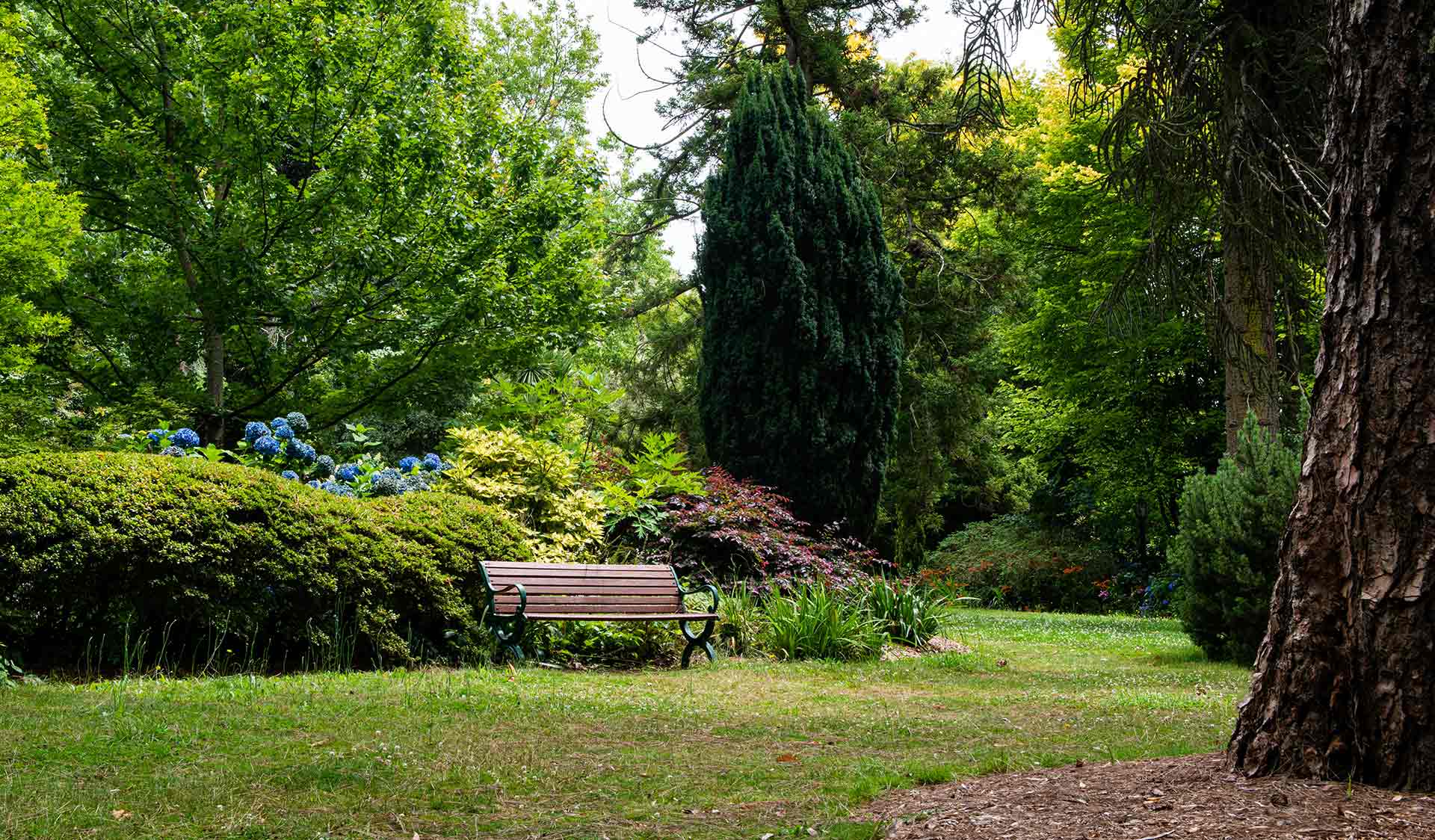
George Tindale Memorial Garden
6. R.J. Hamer Arboretum
Opening Hours: Daylight hours, daily, except days of Extreme or Catastrophic Fire Danger.
Unlike a typical arboretum in which individual trees are displayed as isolated specimens, the R.J. Hamer Arboretum has been arranged like a forest.
Named after Sir Rupert Hamer, the premier of Victoria from 1972 to 1981, most of the arboretum’s plantings were undertaken in 1976 and 1978 with fire protection front of mind.
Most species are represented by no less than a half-hectare sweep of trees. With more than 150 different species of natives and exotics, it is impossible not to be impressed by this atmospheric landscape that is great for exploring and a perfect place for picnics. There are barbecue facilities and gazebos easily accessible from the car park.
Laze below the majestic oaks, birches and willows in summer, watch their leaves unfurl in spring and turn fiery reds, oranges and purples in autumn. In winter the structure of this multi-layered and complex landscape is exposed, as well as the expansive views.
Ranger Tip: Dogs are welcome on-lead but be sure to stay within the arboretum's borders as dogs are not permitted in the surrounding national park.
Accessibility: The arboretum includes steep unsealed tracks that that are not recommended for use by wheelchairs.
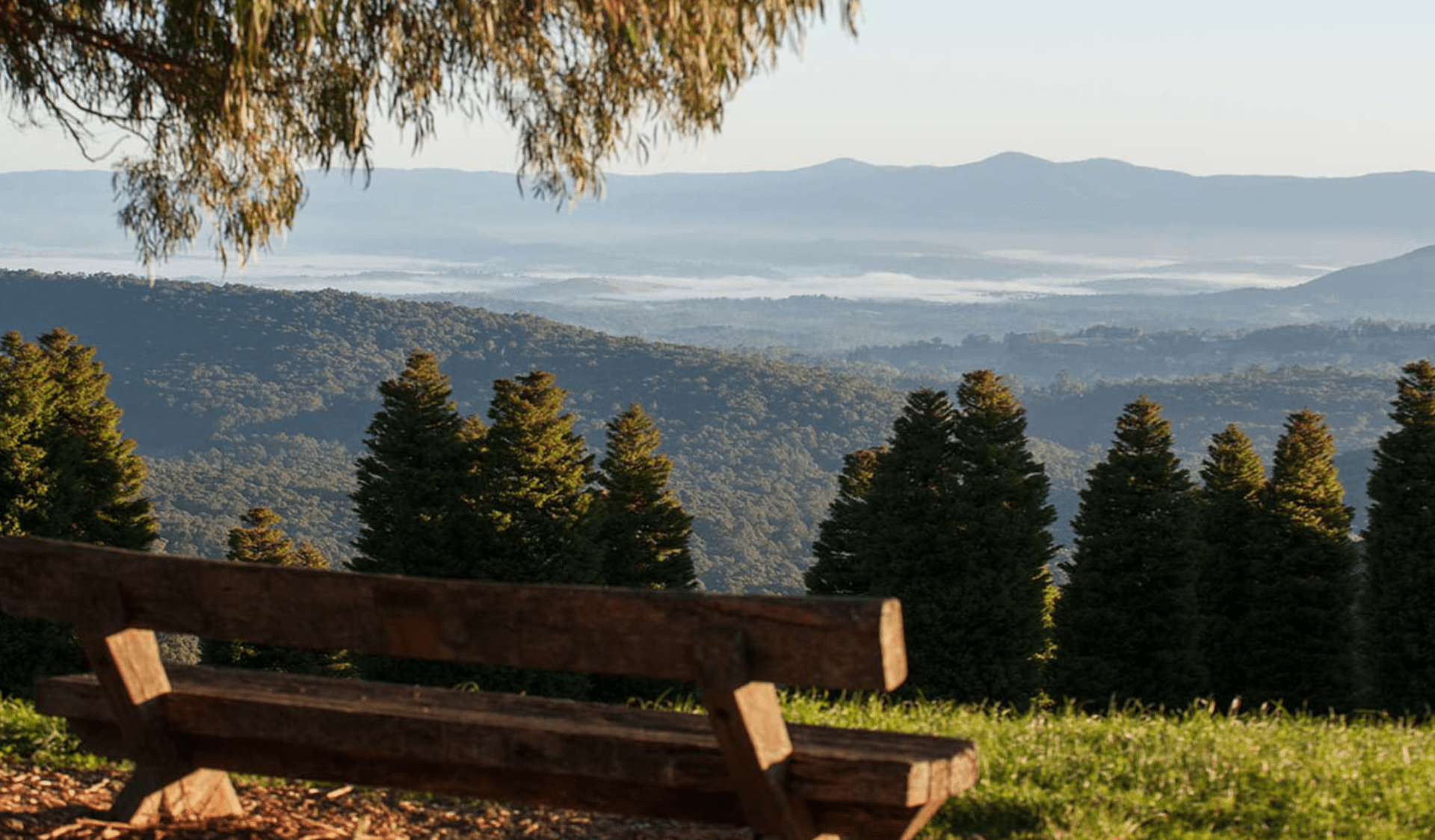
R.J. Hamer Arboretum
7. Mount Dandenong Arboretum
Opening Hours: Daylight hours, daily, except days of Extreme or Catastrophic Fire Danger.
Poised on the eastern slopes of the Dandenong Ranges, Mount Dandenong Arboretum was established between 1928 and 1931 with a special focus on southern-hemisphere conifers. These statuesque trees were the height of fashion in the early 1900s and are finding new audiences today.
But as well as monkey puzzles, kauris, hoop pines and more, the arboretum contains spectacular deciduous trees, grouped according to their species, such as unusual elms and oaks.
Here you can enjoy sweeping views from the easily accessible picnicking area near the car park or take a walk along one of the many informal paths to become immersed in the arboretum’s loose, naturalistic feel.
Rich and biodiverse, this 16-hectare landscape is alive with birds and butterflies, especially in spring and summer. In autumn it is ablaze with brilliant leaf colour, while in winter, the views open up to Silvan and the surrounding areas of remnant forest.
Dogs are welcome in the garden but must be on a leash at all times.
Visitor Tip: This is a tranquil garden year-round and a great option for when other nearby gardens are crowded.
Accessibility: The arboretum includes steep unsealed tracks that are not recommended for use by wheelchairs.
Be prepared and stay safe
Take plenty of water, leave plenty of time for a leisurely drive, and check the weather forecast before leaving Melbourne.
Always check the latest conditions and park closures on the Parks Victoria website before you leave. Use the search field to find the park you are looking for. If a park is closed or has safety issues, a red or orange tab will appear at the top of the park webpage – click the tab to find out further details.


